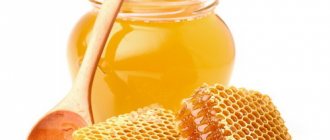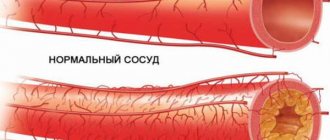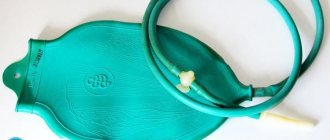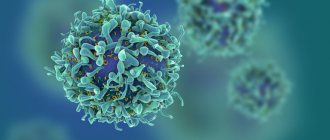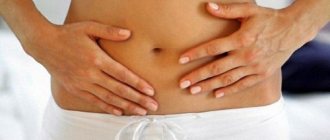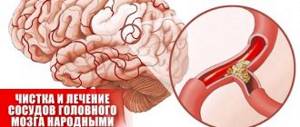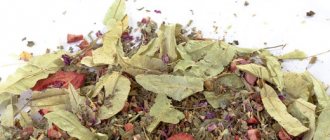Many patients who want to get out of a binge state are interested in the consequences of an IV drip from binge drinking. Detoxification therapy provides significant relief, but after it it is possible to develop side effects or reactions that cause discomfort. Doctors at the Verimed clinic select infusion formulations individually for each patient in such a way as to minimize any negative aftereffects.
Give me an IV!
Why is there such a love for IVs in our country and why is their benefit for “heart patients” just a myth
“Doctor, why weren’t I prescribed IVs? You stuff them with pills, but don’t treat them.” Such remarks from patients are not uncommon. The vast majority of our compatriots, especially middle-aged and elderly people, unquestioningly believe in the healing power of infusions and happily provide their veins for traumatic manipulations. At the same time, in the West, infusion therapy is used only in exceptional cases. Let's figure out which tactics are optimal.
Subtleties of introduction
A drip, or intravenous drip infusion, is a method of delivering various solutions, usually of an impressive volume (100–500 ml) directly into the blood. This type of drug administration gained particular popularity in Soviet medicine in the second half of the last century, and for good reason.
Read also: Should I have surgery?
Firstly, Soviet pharmacists and doctors were absolutely sure that infusion therapy had significant advantages over oral and intramuscular therapy. It was believed that immediate introduction into the bloodstream and the highest, 100% bioavailability provide an optimal therapeutic effect. And secondly, the capabilities of domestic doctors in those days were significantly limited by the strong Iron Curtain, which practically excluded access to the achievements of world medicine and pharmacology.
However, the subsequent destruction of barriers to innovative drugs and modern knowledge could not break the traditions that had been formed over decades. The commitment of many doctors and the vast majority of patients to IVs has proven unbreakable. But if we ignore subjective preferences, today it is obvious that infusion therapy has both positive and negative sides, and the latter often outweigh.
Advantages of IVs
There is essentially one advantage - the high speed of delivery of the drug into the blood. The drug penetrates the bloodstream instantly, and the bioavailability of the drug reaches 100%.
Attention - a myth! Some consumers believe that injections are more gentle on the digestive tract than tablets. It's a delusion. Regardless of the method of administration, drugs that aggressively affect the gastrointestinal mucosa (for example, diclofenac) are absorbed into the blood and trigger a chain of biochemical reactions that reduces the protective capabilities of the mucosa.
Disadvantages of IVs
But there are a little more shortcomings. Among them:
- traumatic introduction;
- possibility of infection;
- additional load on the heart and kidneys due to the introduction of a sufficiently large volume of fluid.
In connection with the latter, infusion therapy is not used for heart failure, renal dysfunction and some other diseases.
However, despite the presence of negative aspects, it cannot be said that droppers are definitely an outdated method of administering drugs.
When to drip?
In some cases, intravenous drip administration of drugs is indeed a therapy that has no alternative. So, droppers are needed:
- in emergency conditions, when the patient needs emergency medical care (accidents, cardiovascular disasters, etc.);
- in situations where it is necessary to quickly administer a large volume of solution, for example, in case of dehydration due to severe vomiting and/or diarrhea, acid-base imbalance, intoxication, massive burns, etc.;
- in cases where the drug cannot be administered per os
, i.e. through the mouth. However, in this case, the drug can be administered in the form of an intravenous (not drip) injection; - if it is necessary to constantly have the drug in the bloodstream in a certain dosage. However, it should be remembered that modern tablets, when taken regularly, can ensure a constant content of the active substance in the blood;
- in the absence of the necessary medicine in tablet form. Chemotherapy drugs primarily fall into this category.
In other cases, which include most infusion therapy prescriptions, there is no need for IVs. Modern oral medications have high bioavailability and are able to provide the required content of the active substance in the blood.
How can you support your body?
Fans of IVs, whose domestic medicine has spent decades developing a commitment to traumatic and, alas, usually unfounded treatment, may become confused when familiarizing themselves with the modern view of infusion therapy. After all, they are used to periodically going to the hospital to “support” the blood vessels and heart, and at the same time the liver and other organs and systems. Moreover, they got real results, including in situations where drugs with unproven effectiveness were administered.
Many experts are confident that in these cases we can safely speak of a placebo effect, which can reach impressive levels. In addition, we must not forget that in a hospital, a patient, as a rule, also takes pills, and in a disciplined manner. And the effect of treatment is largely due to oral therapy.
By the way, if a “freshly discharged” patient stops taking the prescribed pills, with a high degree of probability his condition will worsen again - regardless of the number of droppers received in the hospital.
But let’s return to the question of how to properly support the heart, blood vessels and the body as a whole. The answer to it is so simple that perhaps those who like to “get treatment” will be disappointed. The only effective way to improve the functioning of the cardiovascular system and reduce the likelihood of developing many diseases is a healthy lifestyle.
These three words, which may have become ingrained in many people's teeth - they say it so often in recent years, imply a whole list of sometimes serious changes in the way of life:
- balanced diet;
- regular physical activity;
- to give up smoking;
- drinking alcohol in moderation;
- body weight control.
No less effective ways to support the heart are monitoring blood pressure, blood glucose and cholesterol levels, and, if necessary, adjusting these indicators using modern medications.
Despite the apparent simplicity of the measures listed above, it is quite obvious: if every person who likes to “drip” takes their health seriously, he will certainly feel that he really does not need IVs.
What needs to be done if there are obvious negative consequences after a drip for binge drinking
First of all, stop the flow of medicinal solutions into the blood. The next step is to find out the cause of the violations.
To do this, the doctor:
- interviews and examines the patient;
- measures heart rate, blood pressure, and makes an ECG;
- checks for seizures and neurological pathological symptoms.
If the cause is identified, emergency symptomatic therapy is carried out. Quite often, when providing assistance to patients with severe withdrawal syndrome, a clinical picture of acute alcoholic psychosis—delirium tremens—begins to develop. In this case, an immediate call to a specialized team is required and the patient is taken to the department of a psychiatric hospital.
Indications and contraindications
Cleansing of cerebral arteries by infusion of drugs is indicated in the following cases:
- hemorrhage into the ventricular cavity;
- accumulation of fluid in the space between the membranes of the brain;
- improvement of tissue trophism;
- maintaining intracellular metabolism;
- elimination of blood clots;
- reducing the risk of blood clots due to bleeding disorders;
- treatment of atherosclerosis, elimination of cholesterol plaques in blood vessels;
- arterial damage due to diabetes;
- degenerative-dystrophic changes in nervous tissue against the background of Alzheimer's disease and Pick's syndrome;
- stroke of hemorrhagic and ischemic type;
- oxygen starvation of brain cells;
- normalization of hemodynamics throughout the body;
- improvement of the rheological properties of blood.
Principle of operation
The liquid from the bottle or bag, under the influence of gravity, enters the tube, passes through the droplet, again goes through the tube and then enters the vein. The filter and air valve prevent the formation of negative pressure in the system. Otherwise, the liquid will not drip. There are needles on both sides of the drip system, one of which is needed to connect to the drug container, and the other to puncture the vein. The drug enters the reservoir through a filter and is then dosed using a pipette.
The available regulator allows you to reduce or increase the drop rate depending on how the drug is administered: drip or stream. The reservoir is initially filled with a small volume of liquid and care is taken to ensure that there is no air in the tube. To start feeding the solution into the system, a needle is inserted into the lid of the container with the drug, which is used to supply air inside, otherwise the liquid will not flow out. Currently, all medical organizations use disposable IV systems, which is the safest.
Types and composition of drugs
Treatment with IVs to improve cerebral circulation involves the use of the following groups of drugs:
- antispasmodics or vasodilators;
- multivitamin and mineral complexes;
- nootropic;
- calcium channel inhibitors;
- anticoagulants;
- angioprotectors;
- alpha-blockers.
With long-term use of a complex of medications, there is a need to use hepatoprotectors. They normalize liver function and protect its cells from the toxic effects of drugs.
Antispasmodics
Droppers for cleaning brain vessels, the names of which are given in the list, have a vasodilating effect:
The drugs reduce the concentration of potassium inside vascular smooth muscle cells. As a result, the spasm is relieved and the arteries relax. There is a decrease in the intensity of the headache.
By expanding the lumen of the cerebral arteries, more oxygen and nutrients are supplied to the brain cells, tissue trophism is improved and the risk of hypoxia is reduced. The ischemic area begins to be intensively supplied with blood.
Calcium channel blockers
Calcium channel inhibitors help with cerebral circulation disorders: Cinnarizine and Stugeron. Infusions suppress the activity of specific proteins that are located in the arteries. As a result of their blockade, calcium ions are blocked from accessing the vascular smooth muscle cells. The chemical element is responsible for the contraction of muscle cells, so in its absence a vasodilator effect is observed.
These drugs have the following effects:
- reduce blood pressure;
- restore the functioning of the vestibular apparatus;
- improve the rheological properties of blood, reducing the risk of thrombosis;
- increase the elasticity of red blood cells, facilitate their passage through small capillary vessels;
- thin the blood.
Antiplatelet agents for cerebral blood flow
An alternative name is anticoagulants. These are blood thinners indicated for bleeding disorders. If the biological fluid becomes thick, it means that it contains more formed elements and less plasma. In this situation, fibrin is formed, red blood cells and platelets stick together, forming a clot and clogging the lumen of the cerebral artery. It causes ischemic and increases the risk of hemorrhagic stroke.
Antiplatelet agents include:
At the same time, these drugs can provoke the development of internal bleeding if their dosage is mistakenly exceeded.
Alpha blockers for cerebrovascular disorders
In case of cerebrovascular accident, alpha-blockers with ergotamine properties are prescribed. This substance is ergot alkaloids, which increase blood supply to soft tissues and increase their sensitivity to oxygen. Among the drugs that contain chemical analogues of ergotamine, Sermion and Nicergoline are distinguished. To improve pharmacological properties, they contain nicotinic acid radicals. Vitamin PP has a beneficial effect on the rheological properties of blood.
Alpha blockers have the following properties:
- enhance tissue trophism in the area of ischemia;
- increase the supply of oxygen and nutrients to the brain;
- improve memory;
- reduce the risk of blood clots;
- reduce the permeability of vascular walls.
Medicines that improve cerebral circulation
Vascular drugs can improve cerebral circulation. This group includes:
- Nootropil;
- Eufillin, Piracetam;
- Actovegin;
- Solcoseryl;
- Vinpocetine;
- Cavinton.
Active compounds in their composition increase the metabolic rate inside neurons, improve the conduction of impulses and the rheological properties of blood. Unlike antispasmodics, they do not expand the lumen of the arteries. Improved microcirculation occurs due to a decrease in red blood cell aggregation, blood thinning and increased elasticity of the vascular walls. Intravenous administration of drugs is carried out during ischemic stroke, brain diseases and after coma.
Vitamins and microelements
Drug therapy weakens the body, so a multivitamin complex is administered in parallel. Vitamins and minerals not only improve the functioning of internal organs and systems, but also have a positive effect on the blood vessels of the brain. They strengthen arterial walls, reduce the risk of atherosclerosis and increase metabolic rate. For the functioning of the central nervous system you need:
- vitamin P;
- dihydroquercetin;
- mineral components: selenium, silicon and potassium.
The most effective include:
Most often, Ascorutin is prescribed. The yellow solution provides the body with vitamin P and ascorbic acid. Vitamin C strengthens blood vessels, reducing the risk of rupture of cerebral arteries, and reduces their permeability.
Consequences of air entering a vein
Before you decide on serious treatment measures, you must understand the condition that may accompany the patient. After the drip, the condition may immediately worsen: dizziness, migraine, nausea, loss of appetite may appear. This is a normal condition that indicates blood purification.
You must understand that an IV after a binge is not a panacea against the disease. It only helps to provide emergency assistance to the body. Even if it gave an excellent result, this is just a visible effect and it would be a big mistake to believe that every time, after a binge or severe intoxication, you can endlessly save yourself with such measures.
After visible relief, it is necessary to thoroughly cleanse the body of toxins. And how to do this correctly - they will tell you at the online health school. On this resource you will learn a lot of useful information that will allow you to restore your health and take the first step in the beginning of an important path - getting rid of alcoholism.
Blockage of a vein can be caused by an air bubble that gets into it when administering drugs intravenously with a syringe or using a dropper. The air bubble disrupts blood microcirculation, blocking the lumen of the vessel, i.e., an embolism develops.
This is especially dangerous when large arteries are blocked and, accordingly, a large volume of air penetrates. Immediately before inserting the IV, the air in the system is released, so the likelihood of air entering the vein is negligible. To avoid complications and not be afraid of intravenous drips, you should entrust these manipulations to experienced medical professionals.
Rules of application
Cleaning blood vessels with a dropper requires compliance with the following rules:
- The area located 10-15 cm above the elbow joint is compressed using a tourniquet. The hand is clenched into a fist and placed on a flat, stable surface. After a large vein appears, the area where the injection is to be placed is determined.
- Monitor the accuracy of puncture with a syringe. When it enters a vein, it feels as if the needle is penetrating into a free space. At the base of the prick, dark red blood should appear flowing from the vein.
- Just below the area where the syringe was injected, the vein is clamped with the thumb of the left hand. With the second hand, take the needle, pointing the hole upward, and insert it into the vein at an angle of 45°. The syringe is fixed on the patient’s forearm with a plaster. If long-term procedures are necessary, a catheter is installed.
- The regulator wheel is lowered to adjust the delivery rate of the drug. If there are air bubbles in the tube, pour in the solution more slowly. The medicine should be at room temperature.
- After the manipulation is completed, the tourniquet is removed. The patient can unclench his fist. If swelling appears in the injection area, immediately close the vein and remove the syringe. This means that the needle was not in the vein, but in the thickness of the soft tissue, and the drug began to accumulate under the skin. The manipulation is repeated with another vessel.
Once all the solution has been poured in, the patient is allowed to lie down for about 40 minutes. Standing up suddenly is prohibited.
Where to go to get an IV
Droppers for brain vessels do not differ in technology from the administration of other infusion solutions, so treatment can be carried out in any medical institution.
Is it possible to carry out the procedure yourself?
To clean blood vessels at home, proper medical skills are required. A trained specialist can install a catheter or administer an infusion independently, following the algorithm and rules for using a dropper.
Side effects and overdose
Drugs to improve cerebral circulation can cause harm to the body. When injecting a large dosage of potent drugs at one time, an overdose may develop. In this case it is observed:
- dizziness;
- blood pressure surges, arrhythmia;
- drowsiness;
- loss of consciousness;
- nausea, uncontrollable vomiting;
- swelling of the brain and lungs with high permeability of the cerebral arteries;
- stroke associated with rupture of a vessel, with a sharp increase in blood pressure and circulating blood volume.
If the solution is infused incorrectly, there is a risk of side effects. The most common are allergies and phlebitis in the injection area. In the first case, skin rashes appear, accompanied by severe itching, red spots, swelling of the face and throat. Undesirable effects on the blood vessels and heart, digestive and nervous systems rarely develop.
If the patient's condition worsens due to improper use of IVs, therapy is carried out aimed at eliminating any symptoms.
Additional recommendations
Only a doctor can determine how many IVs can be placed in a row.
If a preliminary consultation is not possible, then the solution should be administered once. This eliminates the possibility of overdose, which is fraught with unwanted reactions and complications.
Which arm is the IV placed in? If you perform the procedure on yourself, it is better to insert the needle with your right hand for a right-handed person, and with your left hand for a left-handed person. This increases the likelihood that the needle will hit the vein exactly and not injure the skin.
When administering infusion therapy to another person, you can place an IV in either arm, because it does not matter.
Is it possible to put an IV in the leg? This option for administering the medicine is possible if the veins in the upper extremities are poorly visible. The indication for intravenous administration of the solution in the lower extremities is thrombophlebitis of the venous structures in the arms.
In order to install an IV, you do not need to have a medical education. It is important to first consult with your doctor to correctly select the drug and calculate the dosage.
To carry out the procedure correctly, you must first study the sequence of actions and purchase all the necessary tools. Please note that by placing an IV on yourself or another person, you take responsibility for the consequences.
That is why it is best to seek help from a medical professional who has all the necessary skills.
Advantages and disadvantages of using IVs
Droppers have a fast-acting effect, which manifests itself within 30 minutes after the infusion. At the same time, more than 60% of active compounds that provide benefits to the body are absorbed.
Advantages of infusion administration of drugs:
- quick results;
- normalization of water and electrolyte balance;
- removal of toxic substances from the blood;
- low risk of side effects;
- does not affect the functioning of the gastrointestinal tract and cardiovascular system.
Despite its beneficial properties, the dropper has some disadvantages:
- high load on the liver and kidneys;
- any interference in the internal environment of the body causes stress;
- weakening of the immune system, the body stops producing substances that protect cells from toxins and heavy metal salts.
To avoid the negative effects of medications, droppers are discontinued when the patient’s general condition improves.
Possible complications
During the process of setting up and administering an IV, some complications may develop:
- A through puncture of a vein at the time of its puncture.
- Hematoma caused by weak pressure on the tampon after removing the catheter.
- Getting solutions under the skin. Particularly dangerous is a polarizing mixture that contains potassium and causes tissue necrosis.
- The development of edema due to poor kidney function.
- Allergic reactions to injected drugs.
The possibility of developing the complications described above should be considered before starting therapy. It is necessary to have a kit for the relief of allergic reactions, diuretics, and know the contacts of the intensive care unit. If treatment is carried out at home, you need to have a telephone number and the number of an ambulance station nearby.
| Type of complication | First aid |
| Vein puncture | Firmly pressing the puncture site, puncture of another vein |
| Hematoma | Local cold, then warm |
| Getting the solution under the skin | Local warmth |
| Edema | Diuretics, hemodialysis |
| Allergies | Suprastin, tavegil, hormones |
Hematoma at the injection site
Which ones do they put?
The choice of drug for infusion depends on the severity of the signs of the disease. Droppers are used for hypertension with antihypertensive, diuretic, antispasmodic and restorative drugs.
Magnesia
Magnesia is included in droppers for moderate and severe hypertension. The drug has the following actions:
- relaxes muscles;
- eliminates spasm of vascular walls;
- normalizes heart rate;
- reduces the likelihood of developing atherosclerotic lesions and thrombosis;
- prevents stroke and heart attack.
For infusion administration, a 25% solution is used. Magnesia is diluted with 5% glucose. The medicine is administered slowly, monitoring the body's reaction. It is necessary to inform your doctor if any discomfort occurs. The drug may cause the following side effects:
- digestive disorders (nausea, vomiting, loose stools);
- increased urge to urinate;
- headache;
- dysfunction of the respiratory and cardiovascular systems;
- short-term fainting states.
Droppers are placed 1-2 times a day. The recommended single dose is 40 ml of a 25% solution. An overdose contributes to a sharp decrease in blood pressure and deterioration of well-being. Contraindications to the use of magnesia are:
- severe bradycardia (pulse less than 60 beats per minute);
- dysfunction of the excretory system;
- dehydration and exhaustion of the body;
- pregnancy and breastfeeding;
- complete or partial blockage of the intestine;
- dysfunction of the respiratory system;
- active internal bleeding.
What is saline solution needed for?
In general, this solution is actively used in medicine. It is used for:
- dehydration of the body (drips);
- dilution of various medications;
- in emergency cases, the solution acts as a blood substitute.
It is also used for:
- injections and droppers;
- washing contact lenses;
- and also as an antimicrobial agent.
For medicine, saline solution is an almost irreplaceable thing, since all droppers in medical institutions are made on its basis: medications are diluted with it to achieve the required concentration. Injections, especially vitamins, are most often also given with saline solution, which softens the effect of the drug and makes the injection less painful.
Why is saline solution prescribed?
Saline solution is administered intravenously in the form of infusions when indicated:
- Severe and critical dehydration of the body, disturbance of water-salt balance.
- Reduced plasma volume with large blood losses, dyspepsia, severe burns, diabetic coma.
- Carrying out surgical procedures, postoperative period.
- Intoxication of the body due to infections and poisonings of various origins.
- Epigastric, ileocecal, pulmonary bleeding.
- Digestive pathologies: nausea, vomiting, diarrhea, chronic and acute constipation.
- Lack of Na and Cl in the body.
When introducing droppers of saline solution with additional components, the list of indications expands.
How to remove cholesterol from the body, cleanse blood vessels of cholesterol, cleanse them of LDL
27.07.2017
There are three ways to remove cholesterol from the body’s blood vessels: by changing the diet (even following a specialized diet if cholesterol is high) and enriching the menu with cholesterol-lowering products, folk remedies and medications (medicines). Through changes in diet (and lifestyle in general), it is impossible to remove cholesterol from the body in an amount of more than 20 - 30% of the initial concentration: this is precisely the contribution of nutrition to the total level of cholesterol (TC) - the rest is produced by the liver.
You can cleanse blood vessels of cholesterol using folk remedies in approximately the same proportions. But traditional medicine against cholesterol can only help clear blood vessels of cholesterol if you continue to follow a diet and adhere to a more active lifestyle (it will just be faster).
Cleansing blood vessels from cholesterol by following a diet that dissolves cholesterol plaques and using folk remedies takes from 3 months (and the diet is followed for life, with some tolerances).
Cleaning will not be effective if the initial concentration of TC is higher than 6.94 - 6.95 mmol/l (especially with high risks of heart attacks and ischemia).
To clean blood vessels from cholesterol with medications (usually in the form of tablets), you must undergo a medical examination. Medicines (statins) are prescribed only by a doctor; cleaning blood vessels with them yourself is a bad decision, because...
Statins have many side effects, including potentially life-threatening (destruction of muscle tissue) and simply unpleasant (muscle pain, increased fatigue, etc.).
The use of statins does not eliminate the need to follow a diet and avoid excessive consumption of foods that increase cholesterol levels.
How to clean blood vessels from cholesterol
The most affordable way to clean blood vessels from “bad” cholesterol (low-density lipoprotein, LDL) remains food rich in fiber (soluble and insoluble - fruits, vegetables, berries, root vegetables, nuts), omega-3 unsaturated fatty acids (found in cold-water fish, nuts). Fiber can also be obtained from biologically active additives (BAA), for example, from ground flax seeds. Omega-3 acids are found in flaxseed oil and fish oil (in the form of tablets, capsules or liquid).
Ginger and atherosclerosis
Flaxseed oil for high cholesterol
It is noteworthy that with the help of omega-3 acids you can get rid of cholesterol in the blood vessels, as well as some of the cholesterol (atherosclerotic) plaques.
However, the effect of getting rid of cholesterol plaques has not yet been fully proven: perhaps they can be gotten rid of with a long course of taking medications with omega-3 fats - 1 - 1.5 years. At the same time, the number of atherosclerotic plaques will decrease during this time, at best, by 10 - 15%.
There are no medications with clinically proven effectiveness for the breakdown of cholesterol plaques (statins, however, can lead to partial regression, a decrease in the size of atherosclerotic plaques).
How to clear cholesterol at home
At home, you can clear cholesterol only by changing your lifestyle:
- move more - exercise and sports increase the concentration of high-density lipoproteins (HDL), or “good” cholesterol, in the blood, which cleanses the blood vessels of LDL, transferring them to the liver, where they are destroyed (more details: playing sports for atherosclerosis);
- enriching the diet with products with insoluble fiber, which will hinder the absorption of cholesterol in the gastrointestinal tract (gastrointestinal tract), and soluble fiber, which helps get rid of cholesterol that has already entered the blood and adhering, in general, to a therapeutic nutrition program for atherosclerosis;
- using folk remedies (their effect is a concentrated effect of food to lower blood cholesterol);
- giving up alcohol abuse (it suppresses the production of beneficial HDL, and those synthesized by the body increasingly consist of low-effective small particles of HDL-3, which are not capable of efficiently clearing blood vessels of LDL).
You can easily monitor your diet, physical activity, and medications at home.
How to clean blood vessels from cholesterol with medications
Medicines can cleanse blood vessels of cholesterol much more effectively than any folk remedies, diets or sports. However, they are prescribed by doctors very carefully, because... have side effects. Medicines are used for very high cholesterol levels (above 6.95 mmol/l), as well as for the risk of heart attacks (including repeated ones), strokes and the development of coronary heart disease (CHD).
Cleansing cholesterol with medications has its own specifics:
- Cholesterol is removed altogether, without separation into fractions - both the level of bad cholesterol and the level of good cholesterol are reduced;
- if the level of “good” cholesterol drops significantly, the doctor can change the statin - sometimes this helps (more: how to increase cholesterol levels in the blood);
- The use of statins to cleanse blood vessels from cholesterol does not eliminate the need to follow a diet.
At the same time, there is no need to use tablets for cleaning blood vessels from cholesterol for life (although this is often practiced when there are good reasons for this). Over time, you can stop taking the pills if the TC level has decreased and stabilized at an acceptable level.
Blood purification from cholesterol in the hospital
In hospitals, drugs are prescribed to cleanse blood vessels of cholesterol - statins.
Nowadays, 3rd and 4th generation drugs are used, more effective and less dangerous than their predecessors; however, they remain the “final argument”.
In the hospital (hospital), the patient also follows a diet (if he does not visit the buffet and is not overly supplied with provisions by relatives and friends).
Apart from the possibility of surgical intervention (stenting or coronary bypass surgery), the hospital cannot offer any special procedures for clearing cholesterol or relieving or treating its consequences.
How to remove cholesterol from blood vessels completely
There are no such methods for cleaning blood vessels from cholesterol so that there is no cholesterol left at all. Yes, they are not needed.
Cholesterol performs important functions, including participation in the synthesis of a number of hormones, including testosterone, the construction of cell membranes and the transport of nutrients to the organs and tissues of the body - and this is only about the functions of “bad” cholesterol. Therefore, the task is to remove from the vessels not cholesterol in general, but excess cholesterol.
In other words, there is no method to completely eliminate cholesterol from the blood and cannot exist. We can only talk about eliminating the increased level of LDL cholesterol (even HDL cholesterol does not decrease - on the contrary, it needs to be increased). In addition, it is impossible to get rid of cholesterol completely.
How to cleanse the blood vessels of the heart from cholesterol
There are no fundamental differences in the methods of cleaning the vessels of the heart from other vessels (arteries and veins, capillaries).
However, if all the signs of angina are present and the general condition of the coronary vessels is considered unsatisfactory (clogged with cholesterol plaques), a very complex coronary bypass surgery may be prescribed.
To avoid this, you need to cleanse the heart vessels of excess cholesterol in advance: with a special diet for aortic atherosclerosis, physical exercise and, if necessary, medications.
How else can you cleanse veins and blood vessels from cholesterol?
Avoid fast food and products containing triglycerides (for example, margarine and anything made with it, including cookies). Reduce consumption of sweets and starchy foods.
If high cholesterol levels create a buildup of cholesterol plaques in the veins or arteries, stenting may be required - this is not as complicated as coronary artery bypass surgery, but can (although very, very rarely) cause the cholesterol plaque to break off and form a blood clot (thrombus), which potentially risking a stroke or heart attack.
Therefore, it is better to cleanse the veins of cholesterol at the first signs of its increase, without leading to very high levels of cholesterol in the blood.
How to cleanse the body of cholesterol and toxins
There is simply no such thing as “slag” in medicine. Usually, toxins in relation to high cholesterol levels mean fatty deposits on the walls of blood vessels, cholesterol plaques. You can also cleanse the body of them through diet and physical activity - they also help get rid of “toxins”.
How to remove low-density cholesterol from the body
Low-density cholesterol is eliminated through a decrease in its intake with food, increased physical activity and medication.
Will liver cleansing help lower cholesterol?
If toxins in the liver are interfering with the normal production of bile acids, which break down cholesterol, then a liver cleanse may help lower cholesterol levels.
Removal and dissolution of cholesterol in blood vessels
Removal of cholesterol from blood vessels occurs due to the transfer of LDL to the liver. Transfer is carried out by HDL, so to remove cholesterol from the vessels, tactics are used to increase the concentration of HDL:
- avoiding excessive consumption of alcoholic beverages (although drinking them in moderation - 1-2 servings for a man and 1 serving for a woman per day - may even increase HDL levels: can alcohol raise cholesterol);
- physical activity should be at least 30 minutes a day (with an increase in heart rate, pulse, during training - this can even be a simple brisk walk);
- avoidance of fatty foods rich in cholesterol and triglycerides, such as cookies, processed foods and fast foods;
- eating a large amount of plant foods (vegetables, fruits, berries, root vegetables, etc.);
- if necessary, treatment with medications (statins).
The dissolution of cholesterol in blood vessels can only be achieved through medications. Also, giving up sweets, flour and fatty foods over time leads to a gradual erosion and dissolution of cholesterol.
Source: //aterhol.ru/ochistka/vyivesti-sosudyi-organizma-holesterin/
Making your own drip irrigation
The barrel is placed on a small platform. Elevation will help provide the necessary pressure so that water can reach remote areas with drips. A tap is mounted to it, cutting it several centimeters above the bottom.
One of the main expense items will be the filter. Compared to conventional drip tapes, it is much easier to identify blockages in medical systems. In addition, if clean liquid drawn from a water supply is used for irrigation, then the need for this part may disappear completely. It will be enough just to cover the container from above, and this will help prevent debris from getting into the water. In other cases, when you cannot do without a filter, purchase the most inexpensive model.
After installing the crane, the HDPE angle is installed, which is secured using a coupling. A piece of hose is put on the free side, and another HDPE corner is attached to the second end of the pipe, which is connected to the main hose. If there are several beds, use a splitter to distribute the water to several sides.
When the hoses are laid out, you can begin to connect the medical dropper tubes to them. Since holes are needed of a certain size, a drill of the required diameter is carefully selected. It is successfully replaced with a hot nail. Size is also important in this case. To avoid mistakes, you can immediately mark the hose and make the required number of holes through certain areas.
After connecting, the needle is placed near the stem of the plant, and the system wheel is opened all the way, repeating this with each specimen. This is necessary to check the functionality of drip irrigation. Once the first test run is completed, all wheels are adjusted to the desired level. So, for moisture-loving plants it makes sense to supply more moisture, and for other crops it makes sense to slightly reduce its amount. This individual approach to watering is one of the most important advantages of an irrigation system made from medical droppers.
Side effect
When using isotonic sodium chloride solution as a solvent and
Medication diluent side effects are rare.
When using the drug, acidosis, overhydration, and hypokalemia may develop. Injudicious administration of intravenous sodium chloride solution (for example, in postoperative patients and patients with impaired cardiac or renal function) can lead to hypernatremia, which in turn leads to a decrease in intracellular volume and resulting dehydration of internal organs, especially the brain, which can lead to thrombosis and bleeding. Common side effects of excess sodium chloride in the body are: nausea, vomiting, diarrhea, abdominal pain, thirst, decreased secretion of saliva and tear fluid, sweating, fever, hypotension, tachycardia, impaired renal function, peripheral and pulmonary edema, arrest breathing, headache, dizziness, restlessness, irritability, weakness, muscle twitching and rigidity, convulsions, coma and death. Increased chloride levels can lead to loss of bicarbonates with an acidifying effect.
Subcutaneous administration:
any addition to an isotonic solution may make it hypertonic, which may cause pain at the injection site.
Reporting an unwanted action
If you experience side effects, tell your doctor.
This also applies to any side effects that are not listed in these instructions. You can also report adverse reactions to the information database on adverse reactions (actions) to drugs, including reports of ineffectiveness of drugs identified in the state (UE “Center for Expertise and Testing in Healthcare M3 RB” ). By reporting adverse reactions, you can help provide more information about the safety of the drug.
How is saline solution made?
Saline solution, the composition of which does not contain many components, is produced in production in huge quantities. In the process of creating this medical product, salts are added to distilled water in a certain order. And only when the previous component has completely dissolved, the next one is added.
To prevent the formation of a precipitate in the solution, carbon dioxide is passed through the sodium bicarbonate. It is customary to add glucose last. The container in which the saline solution is prepared is of particular importance. Its composition contains many elements necessary for the body, but there are no metals among them, since they negatively affect the vital functions of tissues. Therefore, it is especially important that saline solution is prepared only in glass containers.
Folk remedies
You can also clean blood vessels using folk remedies. This approach is used only for the prevention of cholesterol plaques, but in no case for treatment. For any disease, therapy is carried out exclusively by a doctor.
There are the following folk remedies for cleaning blood vessels:
- walnuts;
- olives;
- cinnamon and honey;
- infusions of garlic, onion peel;
- lemon juice.
Tinctures, decoctions, and mixtures for oral administration are prepared from these ingredients and remedies. Before use, you should remember that many traditional recipes are allergens. Home remedies will be a good addition to prevent diseases, but they cannot be considered as the main treatment.

